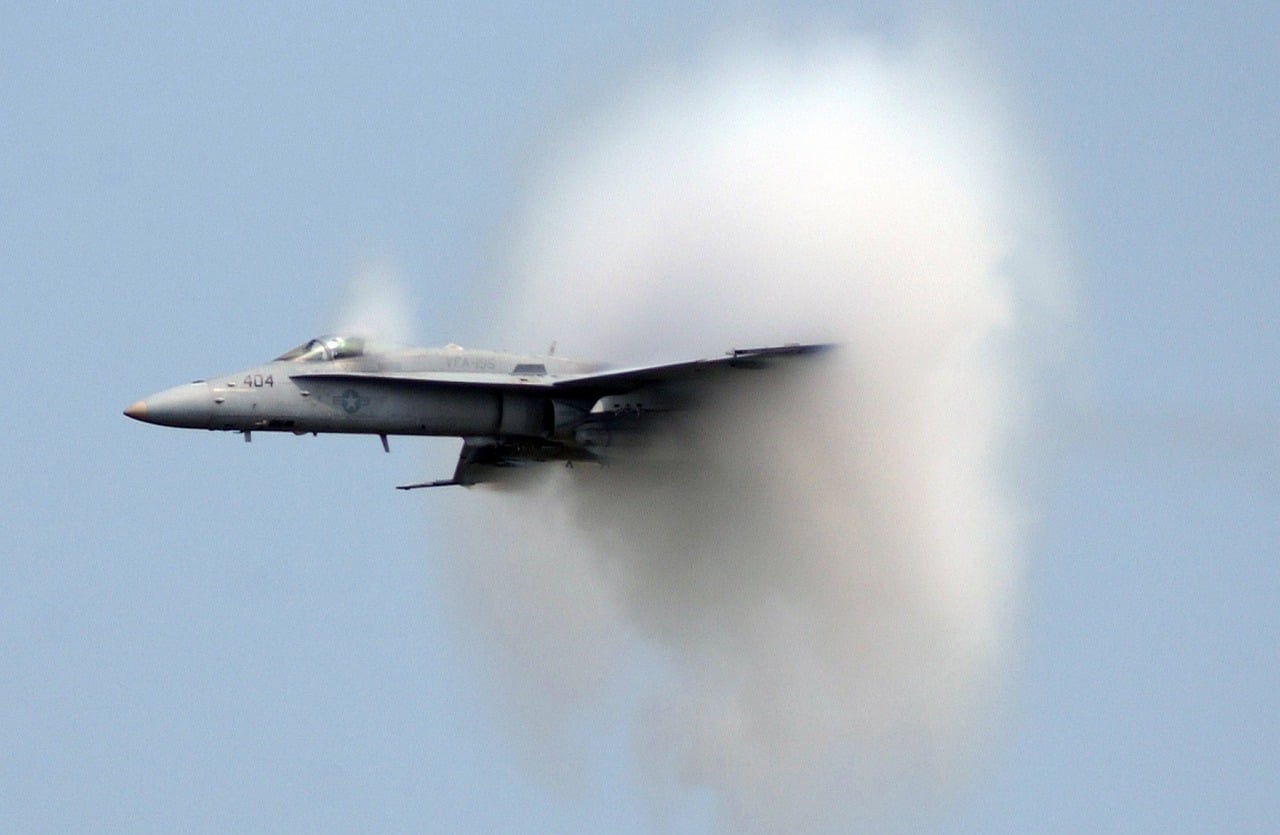NASA is working on a supersonic jet that would turn a flight across the Atlantic into a mere three-hour tour instead of a flight that takes 6+ hours. One of the issues where NASA has been concerned in recent years has been the budget constraint, which caused the cancellation of work on a replacement for the Space Shuttle, among other things. However, the U.S. space agency has President Trump in its corner now, and he’s giving the green light to the supersonic NASA jet.
The Trump administration included full funding for the experimental plane in the proposed budget for fiscal 2019, which begins on Oct. 1, 2018.
The official name for the supersonic NASA jet is the Low-Boom Flight Demonstrator, and it could take off as soon as 2021 for its first test flight, according to multiple media reports. Supersonic planes are able to fly faster than sound travels, but without the sonic boom. Anyone who has lived near an air field or anywhere fast planes and jets take off and land (such as a military airbase) is very familiar with the sound of an aircraft breaking the sound barrier.
The inclusion of the supersonic NASA jet in the budget indicates that the Trump administration wants to prioritize research into next-generation air transportation. The space agency explains the science behind sonic booms, a sound that’s similar to thunder, yet very distinctive. According to NASA, sonic booms happen when air molecules are suddenly pushed apart by the aircraft with great force, creating the equivalent of a wake trailing a ship, only in the air, as molecules are shoved apart violently. The larger and heavier an airplane or jet is, the more air it displaces when breaking the sound barrier.
Aircraft actually create two cones or shock waves: one at the tail and a second at the nose. NASA aircraft tend to create what sound like “double” booms similar to the sounds created when the space shuttles launched.
It isn’t particularly common to hear sonic booms today because passenger planes don’t fly fast enough to break the sound barrier. The most well-known aircraft that once created a sonic boom was the Concorde, which was built in the 1970s and retired in 2003. In fact, Federal Aviation Administration regulations state that it is illegal for civilian aircraft to break the sound barrier, although occasionally, those who live near a military airfield might hear a sonic boom. Other than the noise, NASA states that fuel efficiency is another reason supersonic flight isn’t commonplace today.
Presumably, the supersonic NASA jet that’s currently in the budget for fiscal 2019 will be designed with what’s called a “swept wing design.” The agency said last year in a post about supersonic flight that such aircraft will be designed in that way going forward. According to the space agency, the swept wing design “generally produces crossflow,” which basically just means that it creates disturbances in the air flow along the wing. The result is “turbulent flow, increased drag and ultimately higher fuel consumption.”
The Trump administration has earmarked $633.9 million for aviation in fiscal 2019. Officials announced in the State of NASA speech on Monday that the funds will be used not only to build the experimental supersonic jet, but also to “improve air traffic management” and to work toward the integration of drones into the nation’s airspace.
Even after the supersonic NASA jet is built, it will likely take many years before the technology ends up in commercial aircraft, given the FAA’s tight control over the nation’s airspace.





